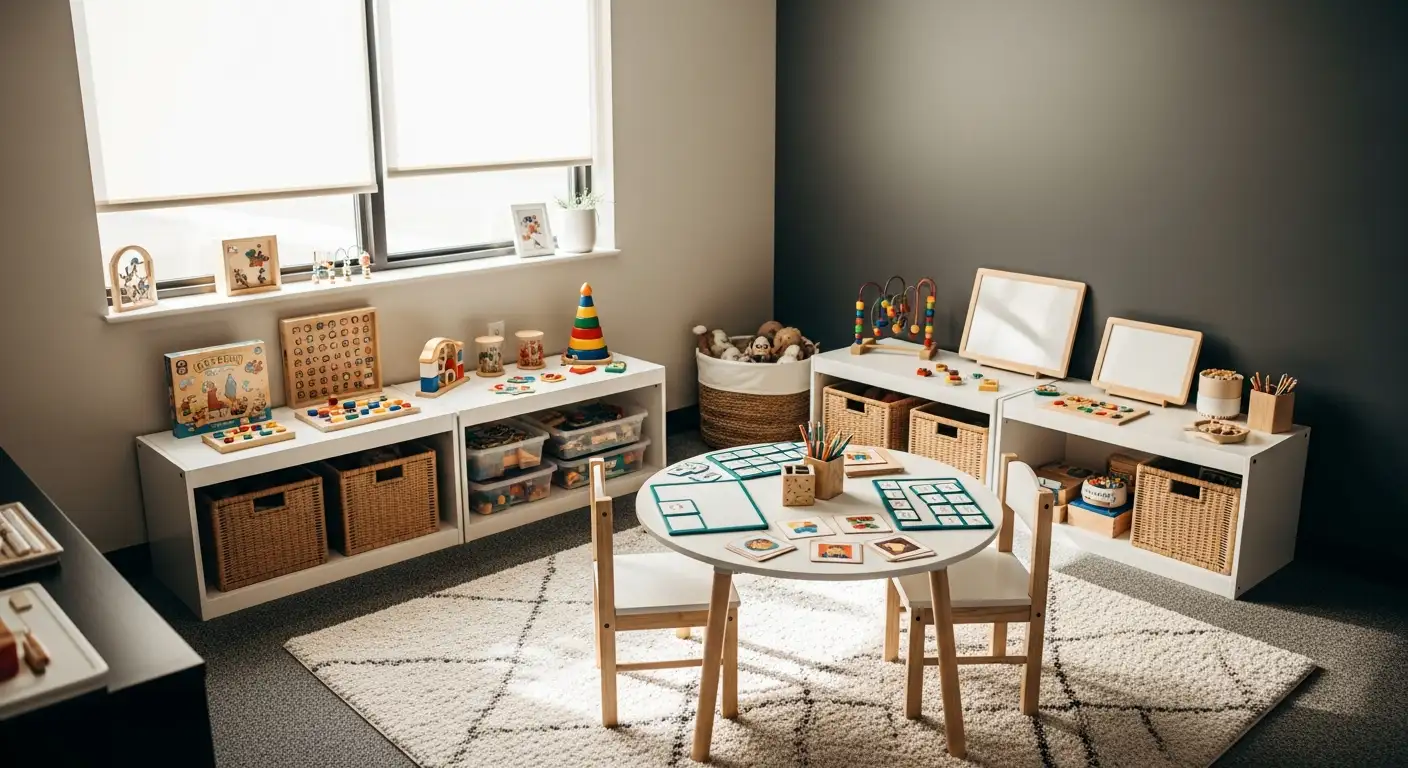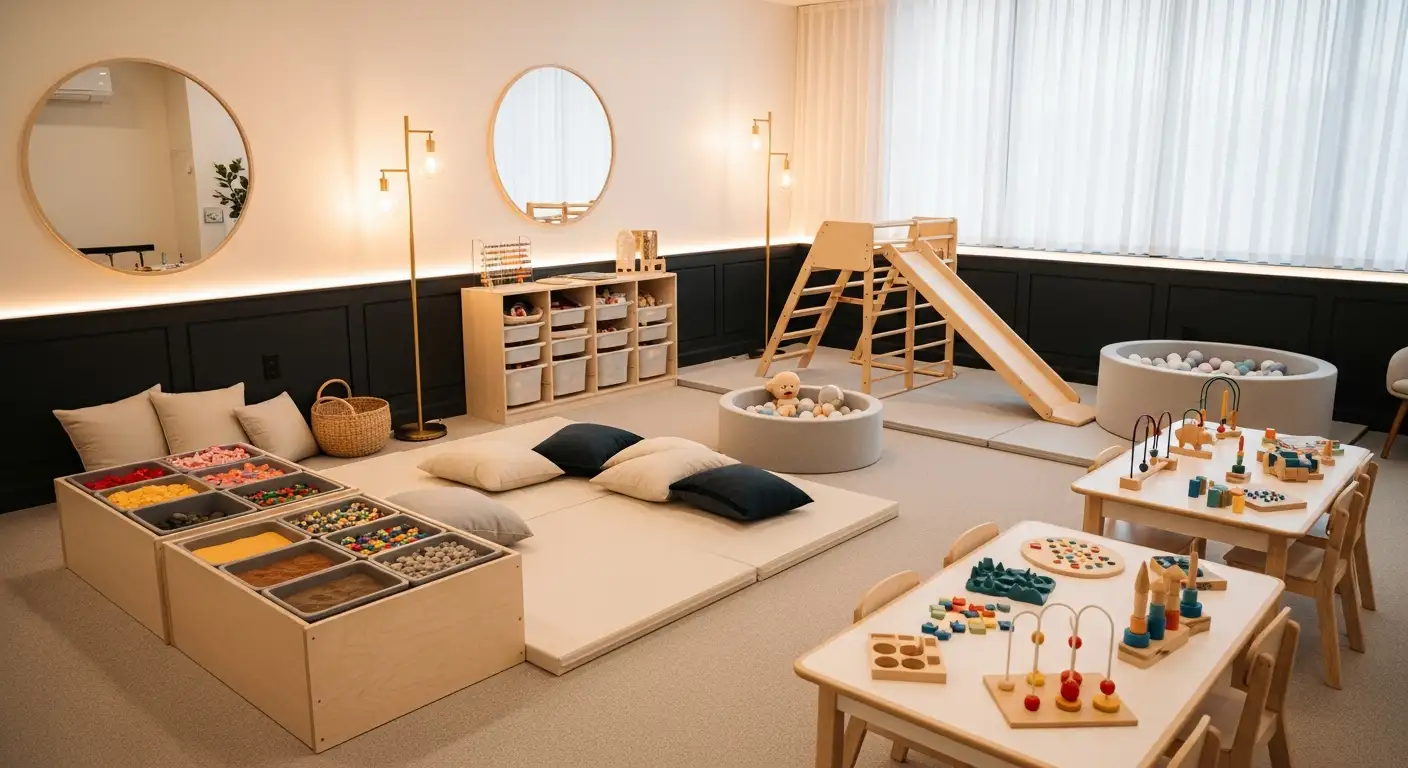What Are the Needs of a Person with Autism


Meeting the Unique Challenges of Autism
Autism Spectrum Disorder (ASD) is characterized by challenges in social skills, communication, sensory processing, and repetitive behaviors. Due to the wide array of symptoms and their varying intensity across individuals, understanding and addressing the specific needs of a person with autism requires a multifaceted, personalized approach. Early intervention and carefully tailored therapies can significantly enhance developmental outcomes, daily functioning, and overall quality of life. This article explores the diverse needs of individuals with autism and the therapies designed to support them at different stages of life.
Core Areas Addressed by Autism Therapies

What are the primary challenges faced by individuals with autism?
Individuals with autism face difficulties in social skills, speech and nonverbal communication, sensory processing differences, and repetitive behaviors. These core challenges impact their ability to interact, communicate, and manage daily activities effectively.
Communication challenges in autism
Therapies like speech-language therapy focus on improving both verbal and nonverbal communication. This includes supporting skills such as requesting needs, expressing feelings, using augmentative and alternative communication (AAC) devices, and improving speech rhythm.
Social skills deficits
Many children with autism experience challenges in social interaction. Social skills training helps children navigate social situations through instruction, modeling, role play, and use of social stories or social skills groups. Relationship Development Intervention (RDI) and DIR/Floortime focus on building motivation and communication based on the child’s interests.
Sensory processing and motor difficulties
Occupational therapy addresses sensory integration challenges by helping children respond more effectively to sensory stimuli. Alongside this, occupational therapy and physical therapy improve fine and gross motor skills, balance, and daily living abilities such as dressing and eating. Integrated approaches combine occupational therapy with behavioral strategies to manage sensory triggers and motor challenges effectively.
Repetitive behaviors and their management
Applied Behavior Analysis (ABA) is a leading therapy that helps encourage positive behaviors and reduce repetitive or undesired behaviors by understanding and modifying behavioral triggers. ABA includes discrete trial training (DTT) and pivotal response training (PRT) to teach new skills and promote natural communication in everyday settings.
By targeting these core areas, autism therapies support children in developing skills crucial for independence, socialization, and learning.
| Core Area | Therapy Approaches | Description |
|---|---|---|
| Communication | Speech-language therapy, AAC, ABA | Enhances expressive and receptive language; supports nonverbal communication |
| Social Skills | Social skills training, RDI, DIR/Floortime | Builds social understanding and interaction abilities |
| Sensory & Motor Skills | Occupational therapy, physical therapy | Improves sensory processing, motor coordination, and daily living skills |
| Repetitive Behaviors | ABA, DTT, PRT | Uses reinforcement to encourage positive behaviors and reduce repetitive actions |
Early Intervention and Tailored Therapy Plans

Why is early initiation of therapy important for children with autism?
Starting autism therapies before the age of 3 is crucial because it leverages the brain's heightened plasticity during early childhood. This period allows children to develop essential skills more effectively, resulting in long-term improvements in learning, communication, and social interaction. Early intervention helps address challenges proactively, promoting better outcomes.
How do individualized treatment plans support children with autism?
Each child with autism has unique needs influenced by their age, developmental profile, and co-occurring conditions. Individualized treatment plans are designed to align therapy goals with these factors as well as the family's preferences, enabling a tailored approach that maximizes progress. Such plans often combine various therapies like behavioral interventions (ABA), speech therapy, occupational therapy, and social skills training to meet comprehensive developmental needs.
What considerations guide the selection of therapy programs?
When choosing autism therapy programs, it is essential to evaluate several factors including thorough assessment of the child’s abilities, clear goal setting, the qualifications and experience of therapy staff, and the emphasis on family involvement. Therapists must adapt interventions to the child's changing needs while maintaining consistent, supportive communication with caregivers. Family preferences and cultural values also play a key role in optimizing engagement and effectiveness.
This early and tailored therapeutic framework lays the foundation for enhancing communication, social skills, and daily functioning, ultimately improving quality of life for children with autism and their families.
Applied Behavior Analysis (ABA) and Behavioral Approaches

What is Applied Behavior Analysis (ABA) and how does it support individuals with autism?
Applied Behavior Analysis (ABA) is an evidence-based therapy designed to encourage positive behaviors and reduce undesired actions through the use of reinforcement strategies. It focuses on understanding behavior as influenced by the environment, promoting new skills in social interaction, communication, and overall development.
Techniques such as discrete trial training and pivotal response training
Two primary ABA techniques are discrete trial training (DTT) and pivotal response training (PRT). DTT uses a highly structured approach, breaking down skills into small, manageable steps taught with clear instructions and immediate reinforcement. PRT contrasts with a more naturalistic style, emphasizing pivotal skills such as initiating communication within everyday settings, making it adaptable to real-life social interactions.
Behavior management strategies and progress tracking
ABA therapy employs behavior management strategies that include consistent reinforcement of desired behaviors and discouragement of unwanted ones. Progress is closely monitored and tracked through systematic data collection, allowing therapists to adjust plans according to the child's needs and responsiveness.
Integration with occupational and speech therapies
ABA is often combined with occupational therapy (OT) and speech-language therapy to provide comprehensive support. OT addresses sensory processing, motor skills, and daily living activities, while speech therapy aids communication abilities. Together, these therapies create a cohesive plan that tackles behavioral, sensory, and communication challenges in a unified manner.
This integrated approach ensures children receive personalized interventions that build skills across multiple domains, enhancing their independence and quality of life.
Developmental and Relationship-Based Interventions
What are developmental and relationship-based therapies for autism?
Developmental and relationship-based interventions for autism are therapeutic approaches designed to improve communication and social skills by engaging children through their interests and natural activities.
Naturalistic developmental behavioral interventions (NDBIs)
NDBIs blend behavioral strategies like Applied Behavior Analysis (ABA) with developmental and relationship-focused methods. An example is the Early Start Denver Model, which encourages learning in natural settings, promoting generalization and motivation.
Floortime and Relationship Development Intervention (RDI)
Floortime focuses on following the child’s lead during play, expanding their emotional and communicative capacities through meaningful interaction. RDI emphasizes building motivation and social participation by helping children form and maintain relationships, often incorporating parental involvement to support skill transfer.
Parent-mediated therapies like JASPER
Parent-mediated approaches, such as JASPER (Joint Attention, Symbolic Play, Engagement, and Regulation), train caregivers to actively support their child’s development. These therapies prioritize empowering families to embed learning and social interaction strategies into everyday life.
Focus on communication and social skills through play and relationships
These interventions highlight natural learning by using play and relationships as the central channels for development. They aim to foster communication, social understanding, and engagement in ways that feel meaningful and motivating for the child.
Together, these developmental and relationship-based interventions provide compassionate, individualized support that enhances social interaction and communication in children with autism, often complementing other therapies for a comprehensive approach.
Speech, Occupational, and Physical Therapies for Daily Functioning
How do speech, occupational, and physical therapies support individuals with autism?
Speech-language therapy plays a critical role in enhancing communication skills for children with autism. It focuses on a range of goals, including helping children request needs, express emotions, improve speech rhythm, and utilize augmentative and alternative communication (AAC) devices. Techniques include supporting both verbal and non-verbal communication methods, such as signs or gestures, to aid expressive and receptive language development.
Occupational therapy is essential for improving self-care and daily living skills. This includes helping children with tasks like dressing, eating, bathing, and other everyday activities to promote greater independence. Occupational therapists also address sensory integration, identifying sensory processing differences and triggers, and developing strategies to improve responses to sensory input. Sensory integration therapy within occupational therapy helps children manage their environment more effectively, minimizing behaviors caused by sensory overload.
Physical therapy supports development of gross motor skills, balance, and coordination. It targets improvements in mobility and physical function, essential for activities such as walking, running, and participating in play or sports. Physical therapists also work on fine motor skills important for tasks like handwriting or buttoning clothes, often collaborating with occupational therapists to align goals.
Integrating these therapies through an interdisciplinary approach greatly benefits children with autism by addressing their complex and overlapping needs. For example, occupational therapists and behavior analysts often collaborate to combine sensory processing strategies with behavioral interventions, creating more effective and compassionate treatment plans. Similarly, speech therapy might be coordinated with occupational therapy to support communication device use alongside motor skill development.
This combined approach aims to build proficiency across communication, sensory processing, motor development, and daily living skills. By working together, these therapies support children’s overall independence, social participation, and quality of life in various settings, from home to school and the community.
Social Skills Development and Psychological Support
What therapies help improve social skills and manage mental health for people with autism?
Social skills training is fundamental for children with autism to successfully navigate social situations. This approach includes structured instruction, modeling behaviors, and role-playing exercises designed to enhance understanding of social cues and effective conversation skills. Social stories—a technique that uses simple narratives to explain social situations—and group activities further support learning by offering repetitive, practical exposure to social interactions.
Alongside social skills training, Cognitive Behavioral Therapy (CBT) is widely used to help individuals with autism manage anxiety, depression, and other related mental health challenges. CBT involves teaching children to identify and modify unhelpful thoughts and behaviors, empowering them to cope more effectively with emotional difficulties.
These therapies not only improve social understanding but also address common co-occurring issues such as anxiety, thus providing a comprehensive support system. Psychological approaches like CBT complement social skills groups by targeting emotional wellness, creating a balanced treatment plan that promotes both social competence and mental health.
Together, these methods help children build the skills necessary for better social engagement and emotional regulation, significantly improving their overall quality of life.
Choosing and Integrating Therapies for Holistic Support
How are autism therapies chosen and integrated to best meet individual needs?
Selecting the right autism therapies begins with a thorough assessment to understand the child's unique strengths, challenges, and developmental goals. This process considers the child’s age, co-occurring conditions, communication abilities, and family preferences. Equally important is ensuring that chosen therapies are delivered by qualified professionals following evidence-based practices.
Assessment and personalized goal setting
Therapy planning involves setting individualized goals tailored to the child's specific needs—whether improving communication, social skills, daily functioning, or sensory processing. These goals provide clear direction and measurable targets to track progress.
Multidisciplinary therapy models
A combined approach often yields the best outcomes. For example, Applied Behavior Analysis (ABA) can help encourage positive behaviors and teach new skills, speech-language therapy targets communication development, and occupational therapy addresses sensory and motor skills needed for daily activities. Coordination among these therapies ensures all developmental areas are supported cohesively.
Parent involvement and training
Engaging parents through training programs empowers families to implement therapeutic strategies consistently, enhancing the child’s skills beyond clinical sessions. Parent-mediated interventions also personalize care to fit the home environment, fostering generalization of learning.
Use of complementary and alternative treatments with professional guidance
Some families consider additional treatments such as dietary changes or mindfulness practices. While these can complement core therapies, it is essential to consult healthcare providers to ensure safety and integration without interfering with primary interventions.
This integrated, personalized framework strives to build skills across communication, social interactions, sensory processing, and daily living, supporting the child’s overall growth and independence.
Building a Supportive Framework for Individuals with Autism
Meeting the needs of a person with autism requires a comprehensive, individualized approach that addresses the spectrum of challenges they face in communication, behavior, sensory processing, and daily living. Early and sustained therapies, guided by careful assessment and involving families, foster skill development and enhance quality of life. Combining evidence-based behavioral methods like ABA with developmental, speech, occupational, physical, and psychological therapies ensures holistic care. Recognizing that autism is unique to each individual, ongoing collaboration among therapists, caregivers, and educators remains essential for empowering those with autism to reach their fullest potential.
References
Recent articles

Expressive Speech Delay 2-Year-Old
Understanding and Addressing Expressive Speech Delay in Toddlers

How Speech Recognition Works
Unlocking the Power of Speech Recognition in Therapy and Healthcare

Autism and Head Size
Understanding the Complex Relationship Between Autism and Head Size

Occupational Therapy in Autism
Enhancing Independence and Quality of Life Through Occupational Therapy in Autism

Do Autistic People Understand Sarcasm?
Navigating the Nuances: Understanding Sarcasm and Social Communication in Autism

Autism Routines
Crafting Effective Daily Structures for Children with Autism

